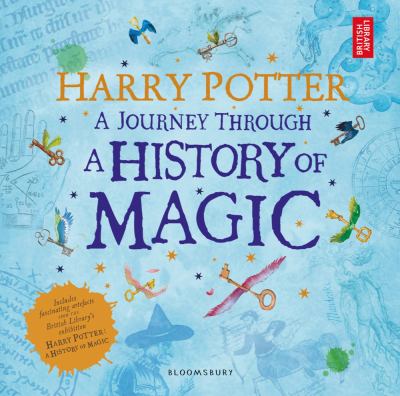
館長分享
Who will you think of when we talk about Wizard? Gandalf in “The Lord of the Ring”, or Merlin in the legend of King Arthur? No matter who you recall, I am sure you have heard of his name – Harry Potter! Harry Potter, the fictitious character created by J.K. Rowling, has become so famous that almost everyone would have heard of the name even if he/she has never read the novels nor watched the movies. Since the birth of the first Harry Potter book in 1997, Harry Potter books have been breaking records. More than 500 million copies of Harry Potter books have been sold all over the world, and its stories have been translated into over 80 different languages.
How did J.K. Rowling, the author of the Harry Potter series, create such a masterpiece? What is the thinking and writing process of the great novelist? Are there any hidden secrets in the magical world? Did the characters just pop up in her mind out of thin air? To answer these questions and to celebrate the 20th Anniversary of the first Harry Potter book, the British Library organized an exhibition of “Harry Potter, A History of Magic” from Oct 2017 to Feb 2018. Accompanied the exhibition and curated by the British Library, this book, “Harry Potter: A Journey through a History of Magic”, takes us to a magical journey to explore the extraordinary collections of Harry Potter books.
First of all, if you are a fan of Harry Potter, this book will definitely give you a real thrill. Through the images and descriptions of Harry Potter’s artefacts shown on the book, readers can acquire more magical knowledge, such as the functions of broomsticks, and the characteristics of mermaids and dragons. Besides, the book gives readers clues on how various characters are imagined and created. For example, Fluffy comes from Cerberus which guarded the gates to the Underworld in Greek mythology; Aragog is associated to the bird-eating spider; the idea of half-giant Hagrid may probably come from the legends of giants. Meanwhile, not all elements in the novels come from myths. For example, the bezoar stones, which could save one’s life from poisoning in the novels, really do exist and can be found in the stomach of some animals in reality. With colorful pictures and drawings along with an array of fun facts, this book is also suitable for young adults who can learn to link their imagination with their daily observation to boost creativity.
Apart from the above, the book shows a lot of precious manuscripts of J.K. Rowling. The crossing and notes on her handwritten drafts, as well as various sketches, allow readers to visualize her thinking and writing process. For example, for the plots of sorting students into different houses in Hogwarts School, J.K. Rowling listed out different ways such as ghost courts, gateways, selection from team captains, and of course, the sorting hat with sketches and notes. Furthermore, readers will definitely be surprised about J.K. Rowling’s plans for “Harry Potter and the Order of the Phoenix” shown on the book, in which detailed plots and storylines were clearly written and scheduled.
Come and borrow the book. Or if you prefer to visualize the magical contents, book yourself into a multimedia workstation in a library and watch the video of “Harry Potter: a history of magic”.

